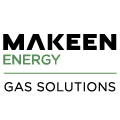Clean cylinders - happy consumers


CASE:
Customer:
OnGas (New Zealand)
The customer's challenge:
Accumulation of dirt and grease on cylinders negatively impacts on the end-user’s purchase and cylinder safety perception.
Our solution:
A washing system tailored to suit OnGas' needs, integrated directly into the conveyor line and other filling equipment, with minimal water consumption, operation, and maintenance.
The outcome:
Coupled with the use of environmentally friendly degreasers, OnGas' cylinders are efficiently cleaned, enabling them to look their best in the market, improving their brand and supporting their drive for increased sales.
Scope of supply:
- Washing machine w. drying area
- Wastewater tank
- Belt filter
- Sedimentation filter
- Water treatment tank
- Heat exchanger
A new, squeaky clean gas cylinder is a thing of beauty - it looks nice in the stores, it feels good to bring home, and its appearance reflects positively on the public’s perception of the filler's brand and the safety of the product. Wouldn't it be nice if all cylinders always stayed looking as good as new? Well, unfortunately, they don't.
OnGas, one of New Zealand's largest LPG suppliers, knows this all too well. Cylinders can be covered in mud, dust, grease, and dirt when they make their way back to your filling plant after a turn in the market. To uphold the best possible appearance of your cylinders, efficient washing equipment is, therefore, a valuable addition to a filling system.
OnGas needed a washing system that allowed them to maintain the high visual standard of their cylinders. In doing so, they could not afford to have a system that would slow down or limit their filling capacity, nor demand too many additional man hours to operate or maintain.
A tailor-made solution
Kosan Crisplant has developed a series of washing systems that tie directly into your filling line, cleaning gas cylinders thoroughly with minimal water consumption. The system is modular and can be put together to suit each customer's needs perfectly. For example, different machines are available for different cylinder specifications, and we install the same type of conveying system that the customer already has in their filling hall. This means that the system is fully integrated into the existing machinery. The washing machine is also made to match the capacity of the filling equipment. For example, OnGas' washing machine is designed to wash a minimum of 1200 cylinders per hour, which ensures that the machine doesn't create a bottleneck in the process.
The system that OnGas opted for functions much like an industrial dishwasher - only on a bigger scale. Traveling along on the chain conveyor, the cylinders enter the washing tunnel and are thoroughly washed using side, top, and bottom nozzles. They then continue into a drying area where a high-pressure air curtain delivers air to all nooks and crannies, leaving no moisture as the cylinder exit the tunnel. What comes out is a bunch of much nicer-looking cylinders. Depending on their conditions, cylinders may need more than one turn through the washing system before they are completely clean. The majority of OnGas' cylinders need only one wash, however.
Low consumption and maintenance
We believe this to be the most efficient cylinder washing solution on the market today, due to its low water consumption, which is thanks to its recirculating design and optimal water blow-off. OnGas’ effective ventilation ensures steam moisture from the machine does not settle throughout the filling hall.
Maintenance of this washing system is very low. OnGas is planning to replace the water only two or three times per year, while the waste bag and sedimentation filter are emptied regularly, taking around three hours per week for a single operator. Kosan Crisplant recommends the nozzles should be cleaned monthly, which is again only a three-hour job for a single operator. The nozzles can be accessed via six doors for convenient access.
At Kosan Crisplant, we are currently designing and producing additional upgrades to OnGas' machine, to take it to the next level. After all, why should we stop developing a product just because it has already been delivered to the customer? OnGas is happy with the solution they have received, and the difference is clear to see: the cylinders exiting their filling hall are clean and visually appealing, making consumers much happier to buy them.
Other Kosan Crisplant washing systems are also in operation across the world (in Peru, Sweden, Slovenia, Bolivia, Portugal, Bangladesh, Kuwait, and Brazil) with capacities from 600 to 1800 cylinders per hour, making these systems practical for operations of almost any size.







